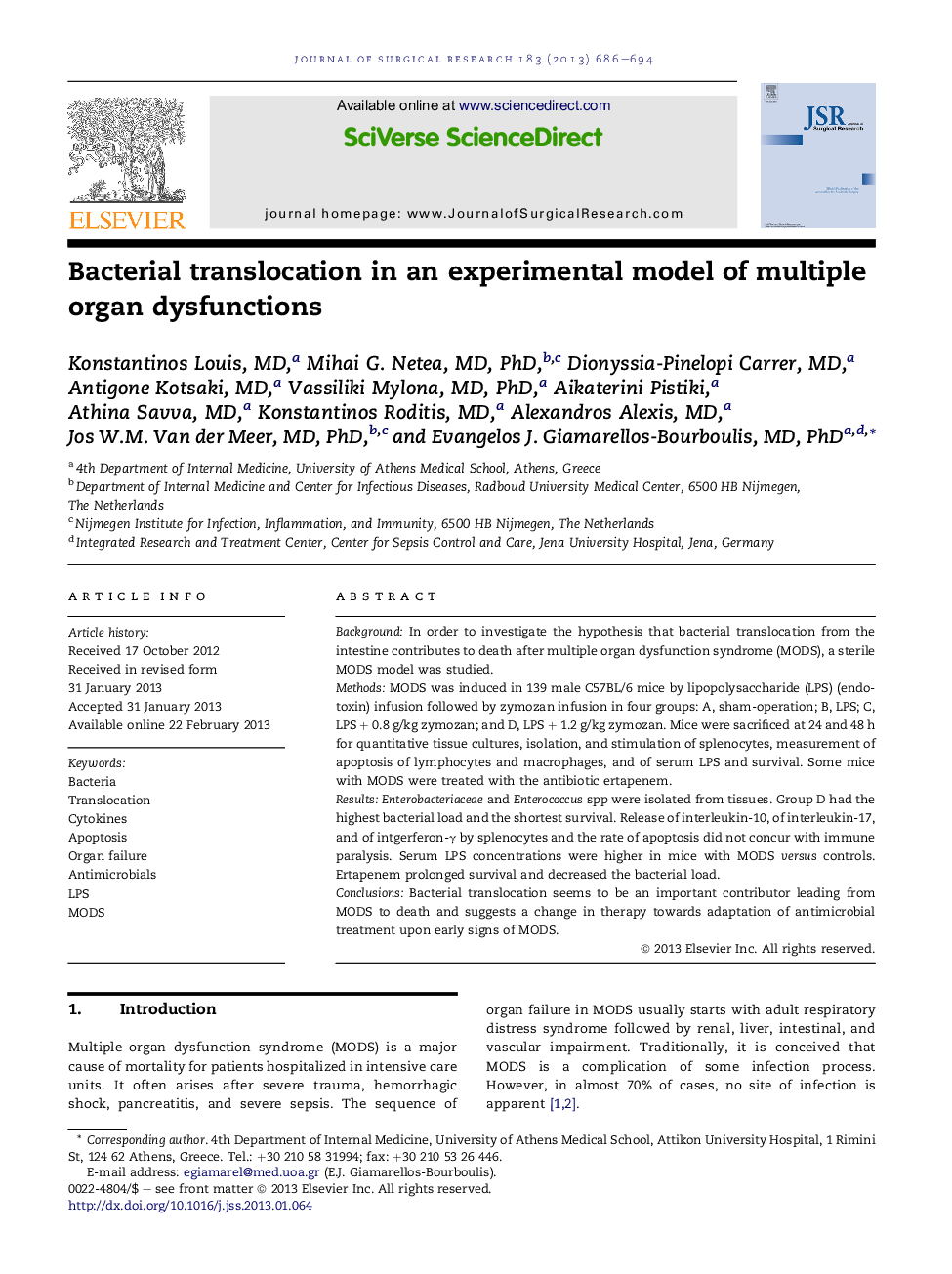| Article ID | Journal | Published Year | Pages | File Type |
|---|---|---|---|---|
| 4300880 | Journal of Surgical Research | 2013 | 9 Pages |
BackgroundIn order to investigate the hypothesis that bacterial translocation from the intestine contributes to death after multiple organ dysfunction syndrome (MODS), a sterile MODS model was studied.MethodsMODS was induced in 139 male C57BL/6 mice by lipopolysaccharide (LPS) (endotoxin) infusion followed by zymozan infusion in four groups: Α, sham-operation; Β, LPS; C, LPS + 0.8 g/kg zymozan; and D, LPS + 1.2 g/kg zymozan. Mice were sacrificed at 24 and 48 h for quantitative tissue cultures, isolation, and stimulation of splenocytes, measurement of apoptosis of lymphocytes and macrophages, and of serum LPS and survival. Some mice with MODS were treated with the antibiotic ertapenem.ResultsEnterobacteriaceae and Enterococcus spp were isolated from tissues. Group D had the highest bacterial load and the shortest survival. Release of interleukin-10, of interleukin-17, and of intgerferon-γ by splenocytes and the rate of apoptosis did not concur with immune paralysis. Serum LPS concentrations were higher in mice with MODS versus controls. Ertapenem prolonged survival and decreased the bacterial load.ConclusionsBacterial translocation seems to be an important contributor leading from MODS to death and suggests a change in therapy towards adaptation of antimicrobial treatment upon early signs of MODS.
